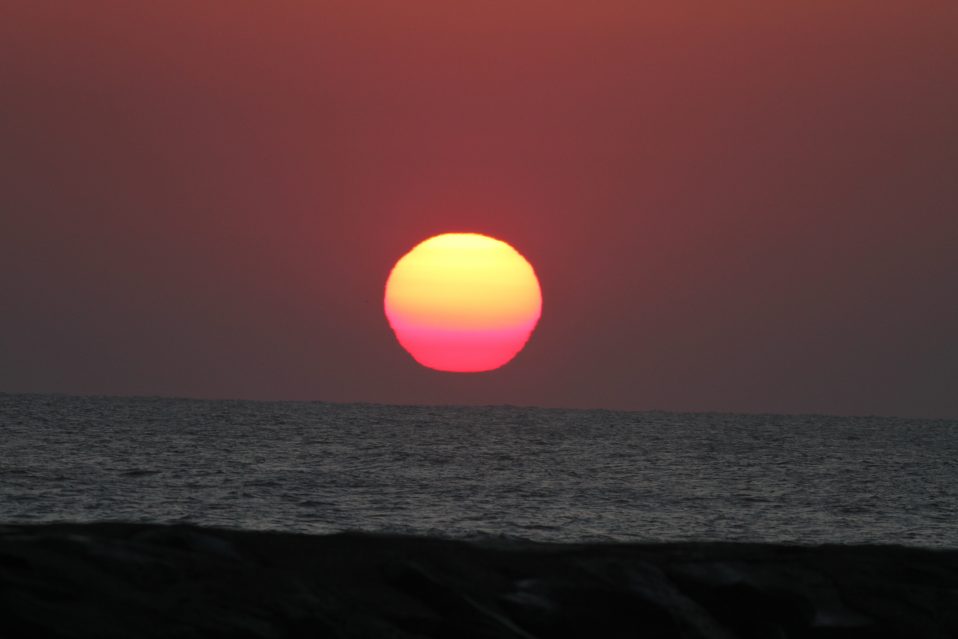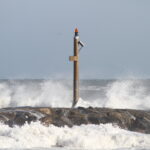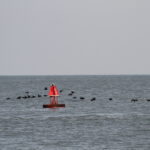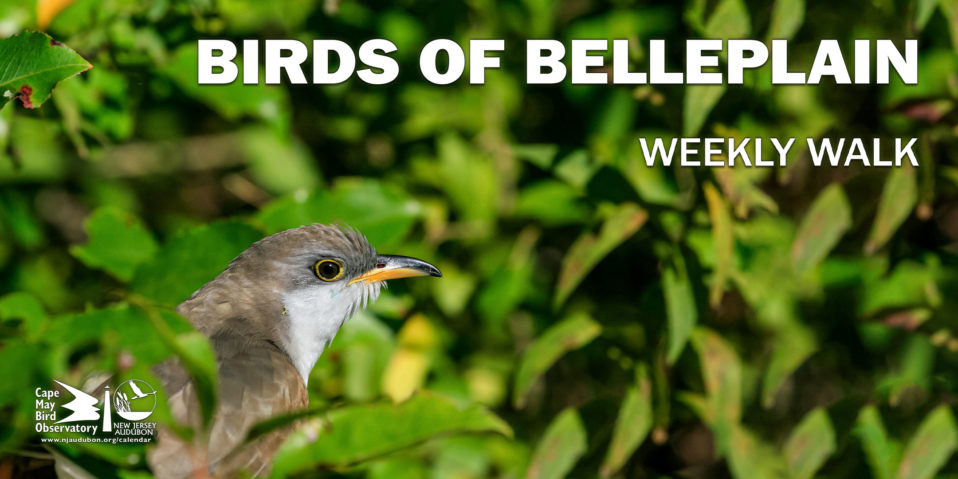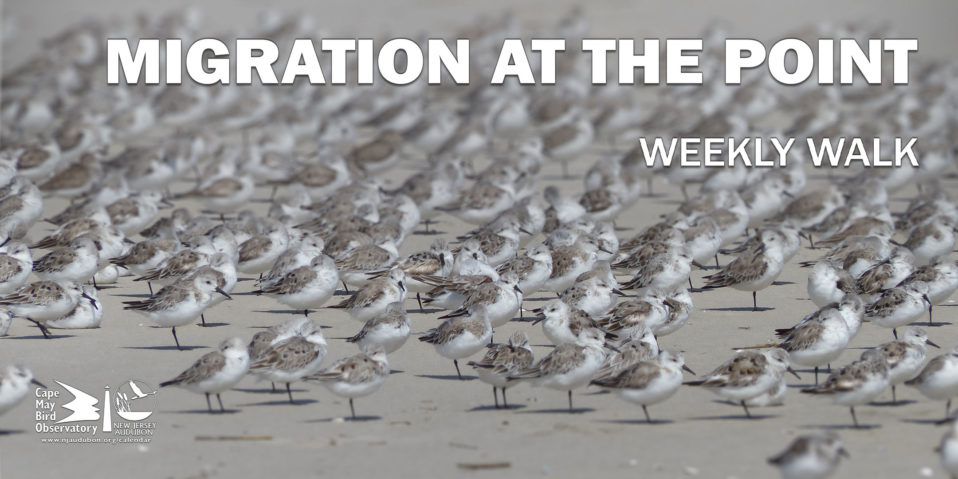These past two weeks saw a noticeable uptick in movement, with our first 10,000+ bird days. Double-crested Cormorants continued in good numbers daily, Black Scoters arrived in force, and a few new arrivals showed up. Read on for brief daily summaries, and be sure to check out Trektellen.org for more detailed information!
(https://www.trektellen.org/count/view/1747/20201007)
October 7th was rather slow day with strong southwest winds, but saw a small movement of Laughing Gulls and produced a Tricolored Heron, which is quite rare at the Seawatch. The 8th, however, saw a shift in the winds to the northwest, which produced a nice assortment of dabbling ducks, our first push of geese with over 300 Canada Geese, and over 2000 cormorants. Also, like the Hawkwatch and Morning Flight, we saw a sizeable push of over 600 Pine Siskins! Northwest winds also bring herons and egrets, bringing 35 Black-crowned Night-Heron, 97 Great Blue Heron, 132 Great Egret, and 38 Snowy Egret to the Sewatch. And last but not least for the day was the first Humpback whale of the season.
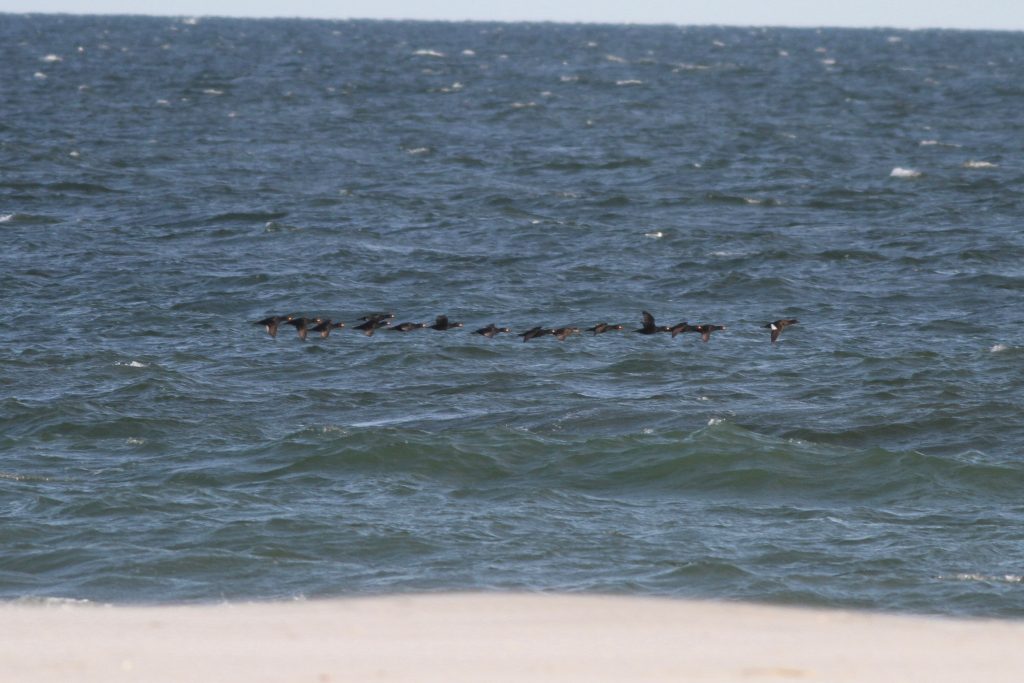
A White-winged Scoter leading a flock of Black Scoters.
The 9th was back to southwest winds, but lighter in force, and several things continued to move thanks to the previous day of good winds. Nearly 700 Green-winged Teal were tallied, over 2500 cormorants, a handful of Brant and Canada Geese, and a nice seven Gadwall, which aren’t too regular at the Sewatch. The 10th brought the first Greater and second Lesser Scaup of the season, six Ruddy Ducks (quite rare on the ocean), 77 Northern Pintail, and a sizeable movement of 3500 Black Scoter and 1161 Laughing Gulls.
October 11th brought the first 10,000 bird day to the 2020 season, with over 7500 Black Scoter, 1800 Surf Scoter, and 4400 cormorants. Also quite notable was another Tricolored Heron, 60 Great Blue Heron, and 29 Common Loons. The 12th was notable for a great movement of gulls in the rain, with the highest single-day count of Lesser Black-backed Gulls for the Seawatch with 116, as well as 406 Great Black-backed Gulls and 214 Herring Gull. Over 3000 Black Scoter continued the movement from the previous day.
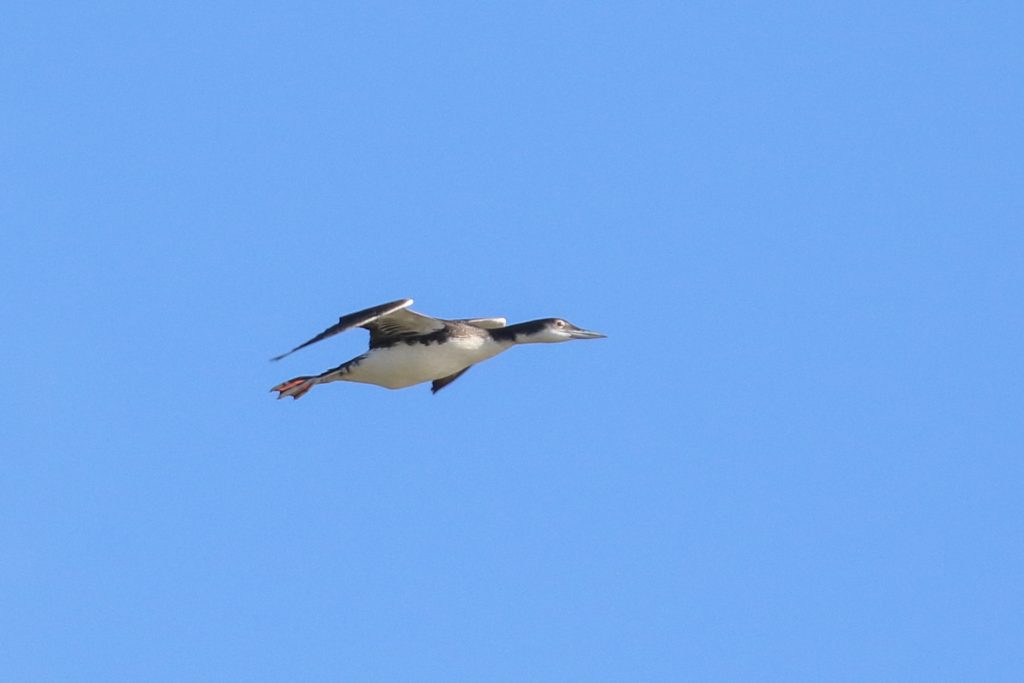
Common Loon (Photo by Tom Reed).
The 13th was highlighted with over 3000 Black Scoter, 5600 cormorants, and over 2000 Laughing Gull. There was also a nice 111 Great Blue Heron and 3 Whimbrel.
The 14th saw continued cormorant movement, with 3300, as well as continued Pine Siskin migration with 538. A Red-breasted Nuthatch, Brown Creeper, and American Pipit flying past helped make it feel like late fall! The 15th was very slow, bringing only another 1445 cormorants and a midday Black-crowned Night-Heron.
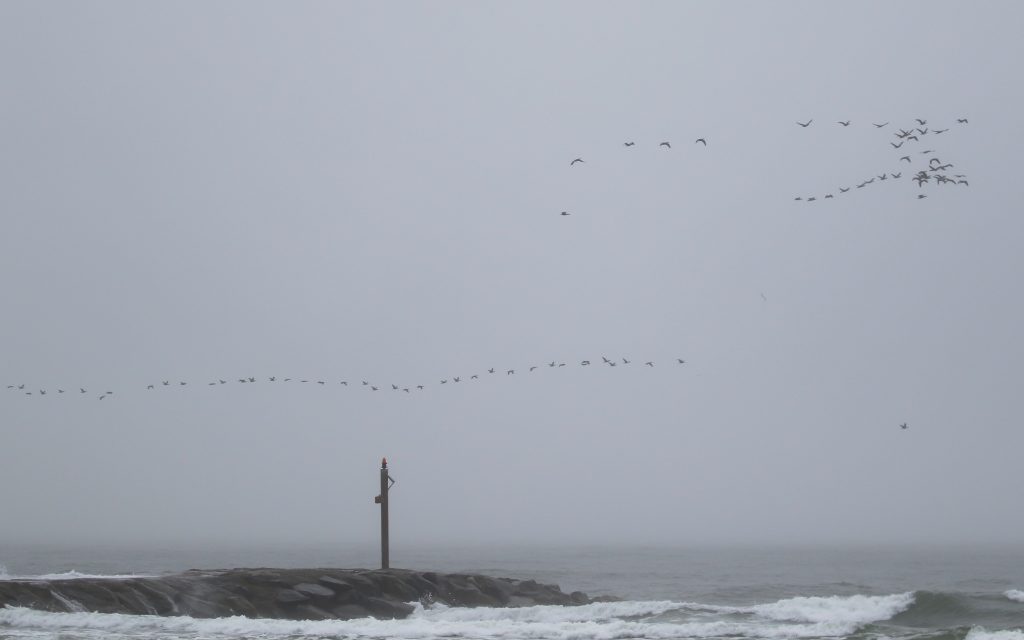
Double-crested Cormorant flock (Photo by Tom Reed).
The 16th saw an increase in Black Scoter to Surf Scoter ratio with 3827 to 120 respectively. On the 17th, 80 Brown Pelicans flew past, along with 5340 cormorants, two late Common Terns, 205 Great Egret, and 34 Snowy Egrets.
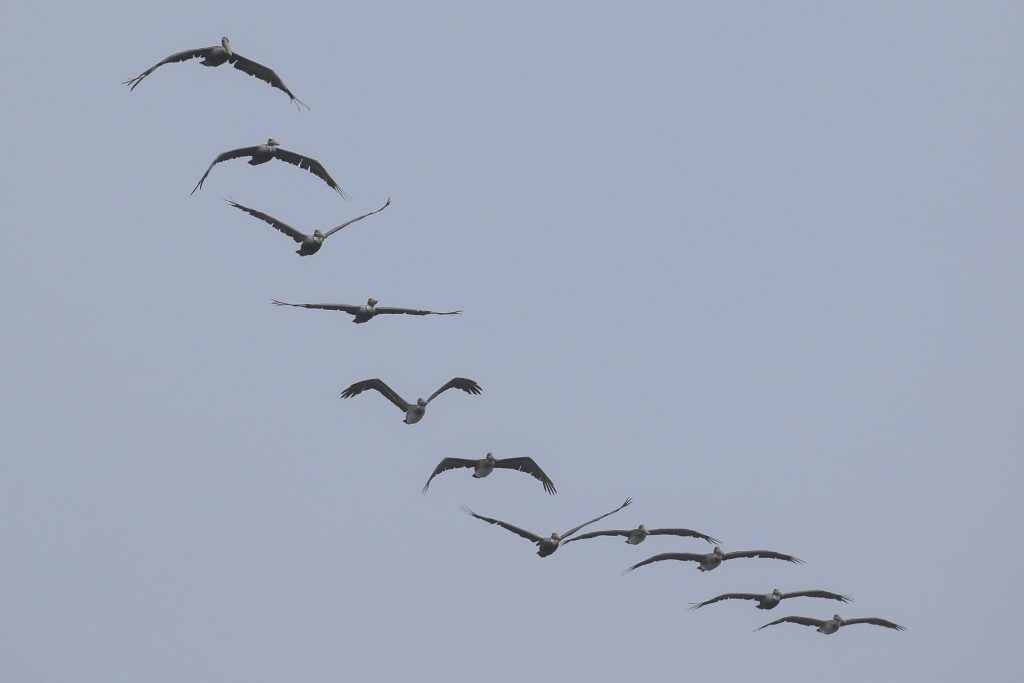
Brown Pelicans (photo by Tom Reed).
The 18th was the biggest scoter day of the season yet thanks to a shift to east and southeast winds. We tallied 10,701 Black Scoter (and only 320 Surf), our first Red-breasted Mergansers of the season, two additional Ruddy Ducks, and 204 Green-winged Teal. This good wind and movement continued into the 19th, with over 7500 cormorants, 5000 Black Scoter, and 300 Northern Gannet. The 20th was quite slow despite continued good winds, possibly due to the morning fog, but was highlighted by a young Little Gull.
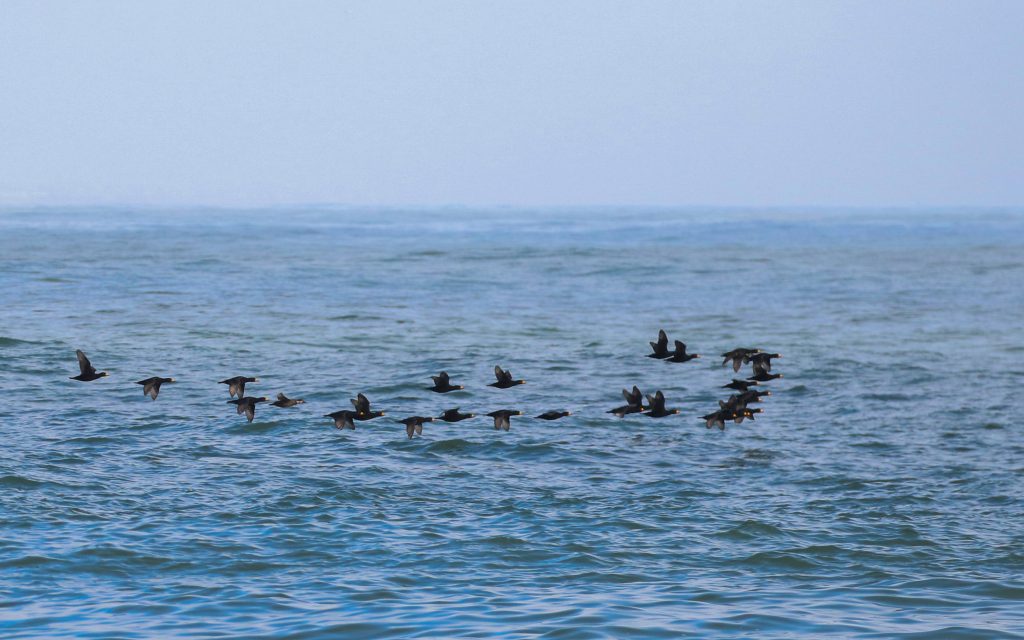
Flock of Black Scoters (photo by Tom Reed).
Thanks for reading, and check back next week!
-David Weber




